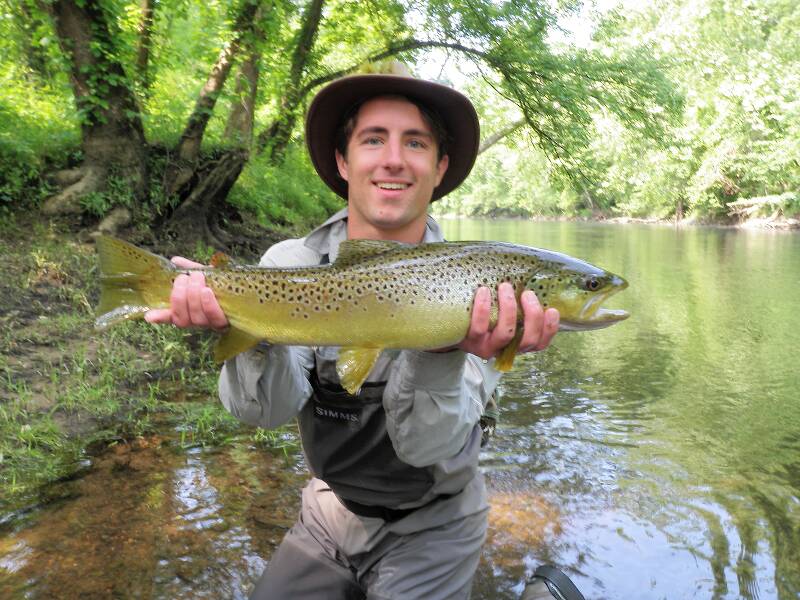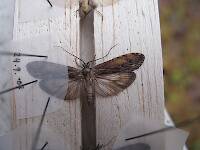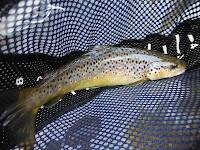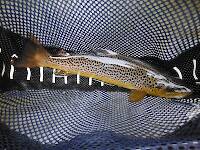
Blue-winged Olives
Baetis
Tiny Baetis mayflies are perhaps the most commonly encountered and imitated by anglers on all American trout streams due to their great abundance, widespread distribution, and trout-friendly emergence habits.
Featured on the forum

This is the first of it's family I've seen, collected from a tiny, fishless stream in the Cascades. The three species of this genus all live in the Northwest and are predators that primarily eat stonefly nymphs Merritt R.W., Cummins, K.W., and Berg, M.B. (2019).

Troutnut is a project started in 2003 by salmonid ecologist Jason "Troutnut" Neuswanger to help anglers and
fly tyers unabashedly embrace the entomological side of the sport. Learn more about Troutnut or
support the project for an enhanced experience here.
Bugtography has attached this picture to aid in identification. The message is below.
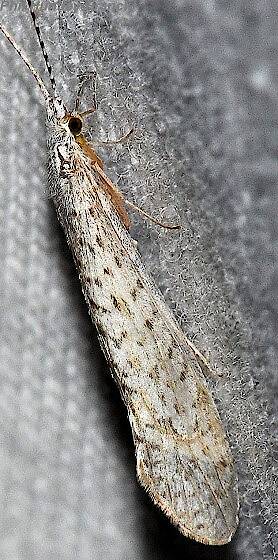
Bugtography on Apr 19, 2011April 19th, 2011, 4:53 pm EDT
Photo taken in Elkton, Oregon - September 03, 2010. I believe it's a White Miller, and was wondering if it could be ID'ed to species.
Thanks,
Phil
Thanks,
Phil
Bugtography
Taxon on Apr 19, 2011April 19th, 2011, 8:18 pm EDT
Phil-
I also believe it to be family Leptoceridae, genus Nectopsyche (White Miller). However, species identification would likely require it being physically examined under a microscope by an expert like Dave Ruiter. To my knowledge, there are records of only two species in OR, but it is always possible for it to be a species which has not previously been recorded for OR. How am I doing, Dave :-)
Regarding your question of whether the darker gray on the apical 4th or so of the wing is natural, my belief is that what you are seeing is shorter hind wings being overlapped by longer fore wings, and that this becomes more obvious under certain lighting conditions.
I also believe it to be family Leptoceridae, genus Nectopsyche (White Miller). However, species identification would likely require it being physically examined under a microscope by an expert like Dave Ruiter. To my knowledge, there are records of only two species in OR, but it is always possible for it to be a species which has not previously been recorded for OR. How am I doing, Dave :-)
Regarding your question of whether the darker gray on the apical 4th or so of the wing is natural, my belief is that what you are seeing is shorter hind wings being overlapped by longer fore wings, and that this becomes more obvious under certain lighting conditions.
Bugtography on Apr 20, 2011April 20th, 2011, 7:26 am EDT
Thanks much, Roger.
Cheers,
:-P)
Cheers,
:-P)
Bugtography
Creno on Apr 20, 2011April 20th, 2011, 2:28 pm EDT
Roger - you are now "king of the lab" Except the "expert like Dave Ruiter" stuff. He gave up on Nectopsyche adults along time ago - there are a couple species he can easily distinguish with a scope but otherwise he cannot tell them apart. even with a scope.
Taxon on Apr 20, 2011April 20th, 2011, 3:46 pm EDT
Yeah right, Dave. The real expert "doth protest too much, methinks."
Jesse on Apr 21, 2011April 21st, 2011, 12:47 pm EDT
Got to be a common house moth!?
Most of us fish our whole lives..not knowing its not the fish that we are after.
http://www.filingoflyfishing.com
http://www.filingoflyfishing.com
Quick Reply
Related Discussions
Topic
Replies
Last Reply
14
Nov 27, 2011
by Mad4Trout
by Mad4Trout
9
Dec 5, 2020
by Creno
by Creno



